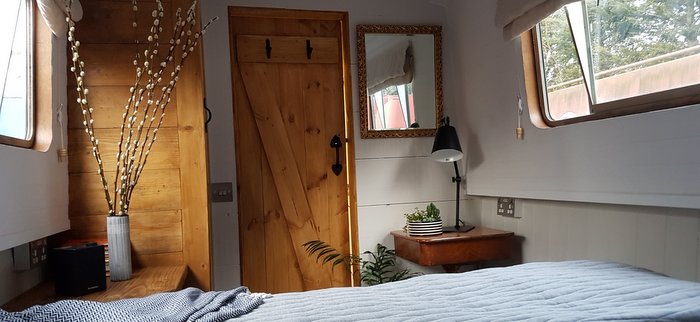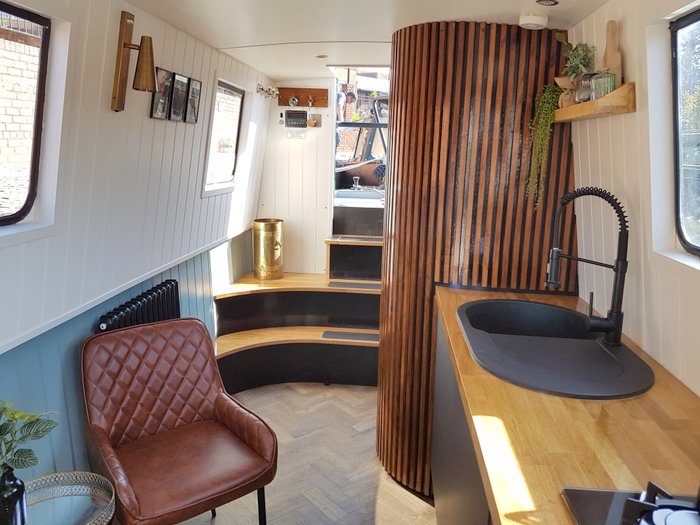It strikes me every time I open a canal boating magazine and see a “modern” narrowboat interior: What’s with all the wood? It’s been well over half a century since the narrowboat leisure industry emerged and nowadays the varnish is lighter, the wood more polished. But it’s still a lot of wood.
What would happen if you let the wood breathe? Gave it a little space?
Could you play with paint? Or some lovely natural tile? ? Not every narrowboat interior has to look like a sauna. Just a thought.
Narrowboat fitters are extremely skilled tradespeople who develop their craft over many years. They love to wield a bit of marine ply here, an oak trim there. Then they’ll show you an ash veneer and you think, “Yes, that’s classy. That looks expensive. Let’s put that in somewhere.”
It’s a slippery slope when you start talking veneers. Before you know it, you have a highly-crafted brown box.
Let the wood breeeeeeathe, people.
Less is more.

Reclaimed pine boards used for cladding and interior doors on Lesley Ann.

Tongue and groove painted in Farrow and Ball’s Winbourne White and Oval Room Blue on Water Vole.
While we’re on the subject, try turning the idea of “luxury” upside down. Take a look at the world of high-end interior design where you’ll find polished concrete holding its own against marble and granite. Inexpensive wriggly tin has become the architect’s go-to for big budget projects and scaffold boards are having their moment as cladding and doors.
You know where I’m going with this, don’t you? Because you can’t throw money at a project and expect it to look beautiful. We can all bring to mind people who have money but dubious taste.
If your boat fitter suggests an oak veneer, please ask for some time out before you answer.
Same goes for any mention of “luxury” LED lights that change colour. But that’s a whole other blog post?


